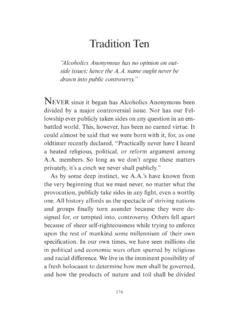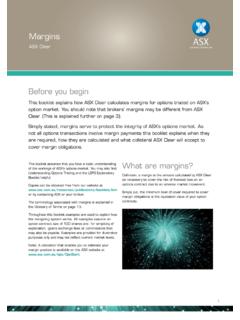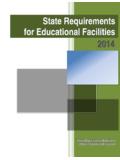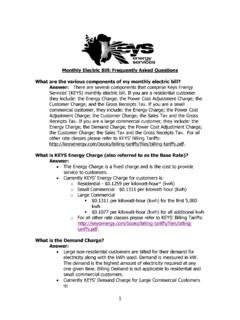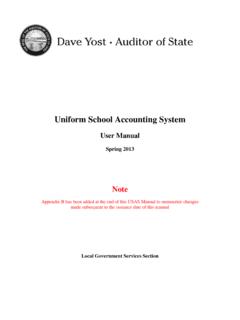Transcription of The effectiveness of internal controls in revenue ...
1 Journal of Case Research in Business and Economics The effectiveness of internal controls in revenue management: A case study of Zimbabwe revenue Authority (ZIMRA) (2011- 2012). Wilson Matamande University of Zimbabwe Loveness Nyikahadzoi University of Zimbabwe Ever Taderera Midlands State University Elinah Mandimika University of Zimbabwe ABSTRACT. This paper sought to closely look at the effectiveness of internal controls in revenue management and expenditure management by the Zimbabwe revenue Authority (ZIMRA). ZIMRA has continuously upgraded its internal controls systems since the time it was incorporated in 2001. From that time the organisation strove to provide services efficiently and effectively to the general public and its main stakeholder, the Government of Zimbabwe in revenue Management. This paper was to establish whether these measures of establishing internal controls produced meaningful results in increased efficiency, increased revenue inflows as well as minimised revenue leakages.
2 Basic accounting tools were used to gauge the extent to which these were met. The paper went on to give advice to the revenue Authorities as how they could possibly achieve the best results in utilising the established internal control revenue management systems. The paper also explores how to improve on existing internal control systems and even the establishment of potential control systems. The data used was extracted from the following sources: a) The Rev news (ZIMRA bulletin). b) Zimbabwe revenue Authority website c) ZIMRA annual Plans and year end evaluation Reports for years 2001-2012. d) Ministry of Finance Budget Statement e) Primary data collected by the researcher f) Fiscal Policy Statements Keywords: revenue management, tax base, internal controls , accounting records, segregation of duties Copyright statement: Authors retain the copyright to the manuscripts published in AABRI. journals.
3 Please see the AABRI Copyright Policy at The effectiveness of internal , page 1. Journal of Case Research in Business and Economics INTRODUCTION. Zimbabwe revenue authority (ZIMRA) was established in January 2001. Initially it was set up as the department of taxes and customs and excise and it was under the auspices of the Ministry of finance and home affairs respectively. The organisation was set up after the enactment of the revenue Authority act on 11th of February 2000 ( ). The formation of ZIMRA was mainly to facilitate the widening of the tax base by streamlining the tax tax expenditures, minimising revenue leakages and enhancing trade by expediting smooth and quick clearance of goods and travellers. Cognisance of the fact that viability will be enhanced with efficient internal controls and proper accounting systems ZIMRA embarked on huge capital outlay in procuring and establishing accounting software like SAP, Microsoft Office excel and Asycuda (Automated Systems Customs Data) and implementing the relevant internal controls to ensure continued viability.
4 (The Rev News- ZIMRA Bulletin, May 2012). Although the organisation has committed itself to the large capital expenditure on accounting packages and internal controls there are still widespread claims and perceptions that there are a lot of leakages through unscrupulous activities within the organisation. This raises the fundamental question of whether the whole effort on the investment was in vain. This study therefore seeks to explore the effectiveness of the internal controls in ZIMRA's revenue management given the claims and perceptions to the contrary. The paper therefore aims to verify whether the huge capital outlay on accounting software and other internal control systems done by ZIMRA has any impact in the revenue collection. The purpose of the study is to establish whether the instituted internal controls have contributed to improved revenue management. LITERATURE REVIEW. Accounting systems According to Puttick (2001), an accounting system is an array of tasks and records kept by an organisation by which transactions are processed as a result of maintaining proper financial records.
5 The process should be able to identify, analyse, calculate, classify, record, summarise and report transactions and events as they occur. internal controls internal control systems as Puttick (2001) puts it are a set of organisational policies and approved internal processes ( internal controls ) crafted by management of an organisation to ostensibly achieve management's primary objective of ensuring that the business operates flawlessly. He went further to explain that a business is said to be running smoothly if they are able to stick to the management policies, to protect the organisations assets,set up a system that would stop and eradicate manipulation of the accounting information. internal controls could be all encompassing, covering the accounting systems and the other operations of the organisation. Accounting systems controls are those that are designed to ensure that financial reports produce complete financial information and are free from error and can be relied on.
6 These controls encompass segregation of duties particularly as it relates to preparation of accounting records and the custody, keeping of assets, safekeeping of assets and the continuous comparison of assets and internal auditing. (Puttick,2001). The effectiveness of internal , page 2. Journal of Case Research in Business and Economics revenue management revenue Management, sometimes referred to as called yield management refers to a combination of methods employed to improve the viability of a business. It is a method that employs various management aspects such as rate management, revenue streams management, and distribution channel management. It involves a number of disciplines like marketing, operations, and financial management into a highly successful new approach. A. revenue manager must work as a team with other departments to be able to come up with successful revenue management strategies.
7 (Holzer and Kimes,2002). Holzer and Kimes (2002) define revenue management as a method of selling a product to the right customer at the appropriate time and at an acceptable price. This he said would ensure that profits are maximised. Slamet (1995) prefers to define revenue management as an approach which is systematic, continuous and integrated. The whole aim according to Slamet(1995) is to maximise revenue by mainly working on price changes in response to the expected demand. Accordingly it can safely be concluded that revenue management requires a full understanding of historical patterns in order to predict the future. According to Slamet(1995) revenue management refers to managing all aspects that deals with money. This is called the money chain'. Accordingly anything that involves money is an aspect of revenue management. In accounting processes it would refer to the time a transaction takes place in a business to the time when cash is actually received.
8 Inadvertently, revenue management encompasses all the aspects of the money chain' that also touches on the management of customers and partners. (Slamet,1995). internal controls in revenue management (ZIMRA). The primary reason why ZIMRA was formed was to develop improve on revenue collection measures as well as making sure that all revenue leakages are closed. The other important reason for the formation of the organisation was to ensure that it expedites trade by putting in place those measures that allow controlled movement of goods and services. ZIMRA has put in place measures to reduce the leakages. They invariably include segregation of duties, custody of assets, strict authorisation procedures, internal audit, the use of passwords, proper record controls and management supervision. ( ). Segregation of Duties This principle of internal control states that if certain aspects are performed by one individual there is a chance that that person can fraudulently convert the assets of the organisation to own self and also manipulate the accounting records.
9 In accounting for revenue in ZIMRA the three aspects underlying any revenue transaction which are authorisation, execution and recording are performed by different individuals. There must be a clear separation between those initiate records and those who are responsible for the collection of the money. This does not completely remove the possibility of fraud. This is just a control measure. Other measures also have to be instituted within the organisation like strict follow up on people's backgrounds when hiring. Adequate screening of prospective employees before hiring them and management supervisory checks should minimise this risk, or detect collusion if it has indeed occurred. ( internal control manual). The effectiveness of internal , page 3. Journal of Case Research in Business and Economics Custody of assets ZIMRA has put in place requisite measures for the protection of company assets.
10 The measures are meant to ensure that only those authorised have access to the organisation's assets. In the case of some border posts where there are no banking facilities money is transported from these ports of entry in fully armoured cash in transit (CIT) vehicles. The cash is contained in cash boxes which are sealed and locked. The bank keeps the keys to the cash box. In the event that money is not banked within stipulated time (24hrs) due to unforeseen reasons, the money is kept under lock in a safe in a storeroom. These storerooms and safes have locking facilities with adequate control over keys. In addition to that they also have alarm facilities. In high cash volumes environment such as toll sites (tollgates) cash in hand is kept to a minimum by regularly clearing tills during the day and banking the takings promptly. Again if cash is not banked until the following day their receipts are locked in a safe overnight.










